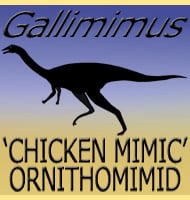Wiehenvenator
In Depth Fossils of Wiehenvenator were first discovered in 1998 around the Wiehen Hills in Germany. When compared to some other theropod dinosaurs such as Allosaurus, these fossils were noted as being of a potentially huge size which led to estimates of up to fifteen metres in length being recorded in popular media for many … Read more
